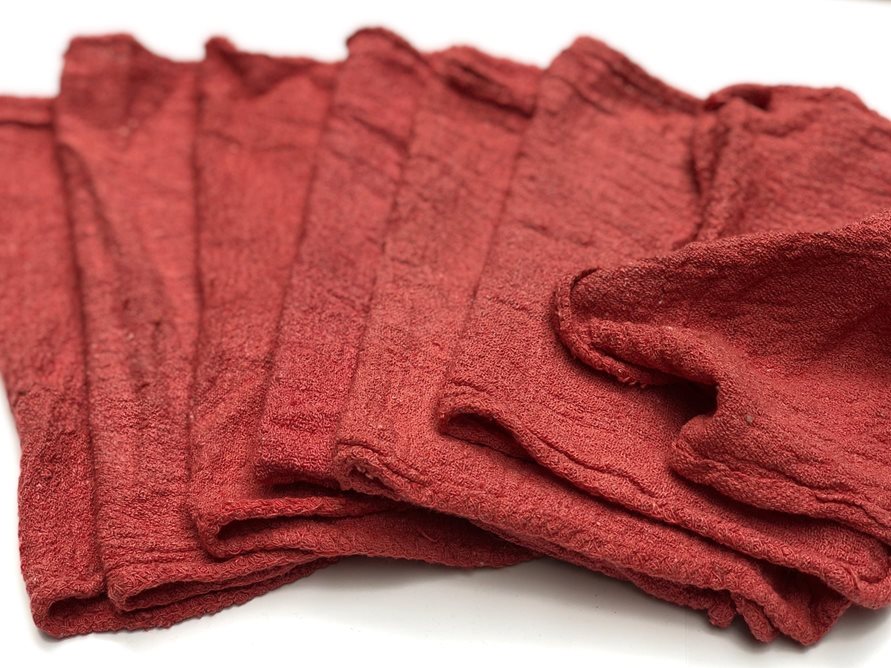Solvent-contaminated wipes
Example of reusable rags
Businesses can manage these wipes according to the conditional exclusions for solvent-contaminated wipes, in which case, they do not have to count them as a dangerous waste.

If you are a household or individual, please go to 1-800-RECYCLE to learn more about recycling household waste.
What counts as a solvent-contaminated wipe?
Common examples include the following after they are contaminated with flammable or toxic solvents:
- Paper towels.
- Cloth rags.
- Cotton swabs.
- Shop towels.
For instance, using a cloth rag to clean up a spill or clean machinery, equipment, or parts can result in that cloth rag becoming a solvent-contaminated wipe.
What are the conditional exclusions?
In 2019, we adopted the conditional exclusions for solvent-contaminated wipes as part of the Dangerous Waste Regulations. These rules apply only to wipes contaminated with solvents that designate as dangerous waste.
What qualifies under the exclusions?
Disposable vs. reusable wipes
How do you manage each type under the exclusions?
Container management
Collect, transport, and store disposable solvent-contaminated wipes in closed, non-leaking containers. These containers should be:- Compatible with the materials stored in them.
- In good condition.
- Labeled with the words “Excluded Solvent-Contaminated Wipes.”
- Free of liquids.
Free liquids removed from the wipes or from the wipes container must be managed as dangerous waste.
Accumulation time limit
Wipes may be accumulated up to 180 days from the start date of accumulation prior to being sent for disposal.Recordkeeping
Maintain documentation that includes:- Name and address of the dangerous waste landfill or dangerous waste combustor.
- Documentation that the 180-day accumulation time limit is being met.
- Description of the process the generator is using to meet the “no free liquids” condition.
Eligible handling facility
Disposable wipes must be sent to a dangerous waste combustor, boiler, or industrial furnace regulated under 40 C.F.R. Parts 264, 265, or 266 Subpart H. You also have the option to send solvent-contaminated wipes to a permitted dangerous waste or hazardous waste landfill.Container management
Collect, transport, and store reusable solvent-contaminated wipes in closed, non-leaking containers. These containers should be:- Compatible with the materials stored in them.
- In good condition.
- Labeled with the words “Excluded Solvent-Contaminated Wipes.”
- Free of liquids.
Free liquids removed from the wipes or from the wipes container must be managed as dangerous waste.
Accumulation time limit
Wipes may be accumulated up to 180 days from the start date of accumulation prior to being sent for laundering/cleaning.Recordkeeping
Maintain documentation that includes:- Name and address of the laundry facility or dry cleaner.
- Documentation that the 180-day accumulation time limit is being met.
- Description of the process the generator is using to meet the “no free liquids” condition.
Eligible handling facility
Reusable wipes must go to a laundry or dry cleaner whose discharge, if any, is regulated by sections 301 and 402, or section 307 of the Clean Water Act. It is your responsibility to ensure the destination facility meets this criteria. Disposal of wastewater resulting from laundering solvent-contaminated wipes must never be discharged to an on-site septic system.Frequently asked questions
Related links
Contact information
Need help?
Contact a dangerous waste inspector in your region.


